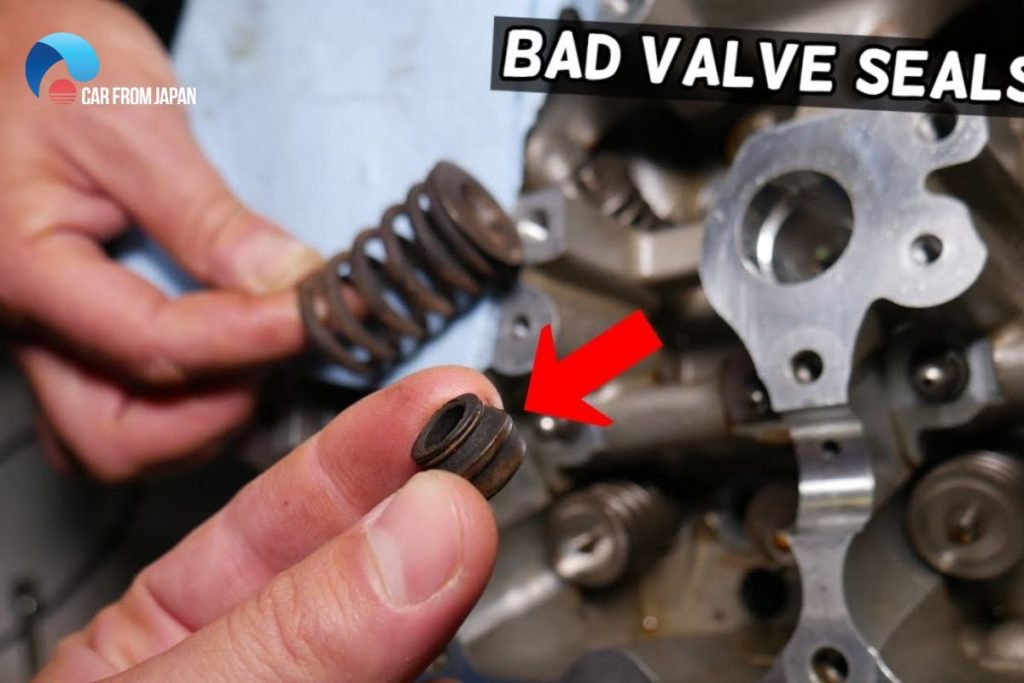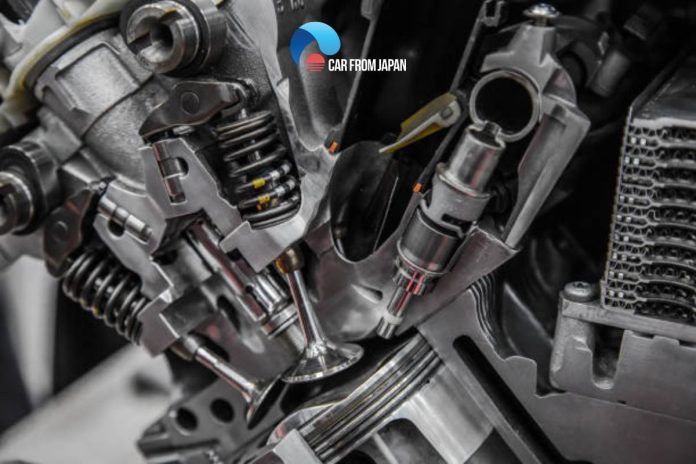Many car owners do not realize that valves play a vital role. The sleeves on the valve prevent the combustion gases from passing through them. When the valves start to wear out, one can easily detect it if they know the symptoms of bad valve seals.
So, to answer the question:” What are the symptoms of bad valve seals?”, car owners must know the definition of a car valve and its seal.
Contents
What Is A Valve Seal?
Valve is a car part designed in order to help the engine run smoothly by closing and opening at the right moment.
There are many valves that play different roles inside the automobile: The exhaust valve will transfer the spent gases outside, while the inlet valve allows the mixture into the cylinder.
And of course, valves are one of the most essential parts of regulation in any system.
To support the valve, the valve seals are created with the purpose of controlling valve lubrication and oil consumption in various types of engines.
Besides, the seal on top of the valves keeps the oil in the cover from being sucked down into the engine. The seals, made from heavy-duty rubber, easily fit over the valve’s top inside a small collar.
For this reason, the seal must be designed very well in order to secure the performance of the seal.
How Does The Valve Work?
The lobes with a shape like a pear, called cams, control the operation of the valves. Along with a rotating shaft called the camshaft and crankshaft gears, the valves help control the exhaust smoke.
Inside the engine block where the camshaft is mounted, various small metal cylinders, tappets, are positioned above each cam.

From the tappets metal pushrod reaches up into the head of the cylinder. The pushrod top connects to a rocker arm. This part has the role of bearing against the valve stem.
This is when the overhead-valve system works: As the pushrod rises on the cam, it plays the parts of pivoting the rocker arm.
This action will push down the valve against the pressure of the spring. On the other hand, when the cam lobe rotates further, the valve spring will move and close the valve.
The Top Symptoms Of Bad Valve Seals
Any problem with the car valve is a serious one, especially when it involves the engine. So what are the symptoms of bad valve seals?
For your vehicle to perform at its maximum capacity, valves with proper seals are crucial. Any issue with the seal or valve means you would have to rebuild the car’s motor to restore it to working condition.
Pay attention to the information below to know about the valve stem seals symptoms in your car. You can also browse online to learn the best maintenance tips for your car engine valve.
Ticking/popping noise
When it comes to issues with your car valve, a clicking or popping noise is the first to make its presence felt. At times, you might notice these issues arriving before any other problem.
When you accelerate the engine, the noise gets louder. It means that some of the train components of the valve are out of alignment or have worn out. The last reason is that the car engine is not getting enough lubrication.
The majority of cars have hydraulic lifters. These require continuous lubrication and constant pressure.
In case the pressure gets a bit off, then it would increase excessive movement in the valve train. Remember that trickling or popping noises are first of the symptoms of bad valve seals in your car.
High presence of smoke
The high levels of smoke is the second sign of faulty valve seals. Drivers can see a lot of exhaust smoke when starting the car, however, too much smoke can be the result of valve seal deterioration.
For that reason, it is recommended to check the valve seal when car owners spot waves of smoke.
Engine power loss
Another indicator of your car’s valves having issues is a decrease in engine power and performance. Automobile manufacturers design car seats to fit into their vehicles perfectly and minimize free movement.
In case the valve guides and seals are leaking, oil can accumulate on top of the valve and cause it to lose its seat or create a gap. It could further lead to issues with compression, which would cause poor combustion and power loss.
Another issue involves burnt valves, which are responsible for causing issues with engine power. When a valve burns, it loses material and has large holes, which leak out gases and decrease the compression rate.
The most common reasons for burnt valves include leaking seals and guides. It can also include them failing to fix an issue with the car’s compression.
When this issue combines with a cooling system or EGT (Exhaust Gas Recirculation) issue, the chances of a burnt valve increase.
It is another symptom of bad valve seals, which one should not ignore at any cost.
Performing the cold engine test
A cold engine test is definitely the best way to answer the question of how to tell if valve seals are leaking.
If you leave a car sitting for a long period of time or overnight, the top of the head of the valve cover will have some leftover oil, and next time you drive, the oil ends up sticking down at the bad seal and creates blue smoke.
This test is the ultimate way to find bad valve seals.
Performing engine braking test
Another test in order to spot the symptoms of bad valve seals is engine braking. In order to know if you have a worn-out valve seal or not, drivers can press the accelerator after coasting, and the oil that is remaining at the front cover will be burned.

Blue smoke from the tailpipe
If you are looking for obvious bad valve guides symptoms, blue smoke coming from the tailpipe is a sure sign that the car engine has an issue.
Although the blue smoke is not a result of issues with the car valve, it is a common indication.
When the valve guides and seals wear, it permits oil to pass through to the combustion chamber and be burned with the car’s fuel. Car owners would also notice that oil levels continue to drop, or they need to add oil more often.
Although the amount of blue smoke noticed with the valve guide and seal failure is small and hardly noticeable, if large amounts are present, you might have damaged piston rings.
Idle, Stop, Go Driving
Bad valve seals mostly show themselves when the car is idling at stoplights. The reason for this symptom is that high levels of vacuum at the intake manifold occur when the automobiles sit idle for long periods of time.
This leads to oil being sucked in the heads and gathered at the valve stems.
With a bad valve seal, the oil will be attracted to the valve guide, passing through the eroding seal when acceleration.
Frequently Asked Questions
To understand more about bad car valve seals, our car experts will help drivers answer the most common questions around these related topics:
What causes valve seals to go bad?
The main factor that causes lower grade materials like nitrile to harden and become brittle is high operating temperatures.
When the seals go bad, they cannot control the oil that slips into the guide. Worn out valve seals cause various issues like cracking, decreasing oil control,…
Will bad valve seals cause low compression?
Several problems with the valve can lead to low compression. There are many reasons for this issue.
The air intake and exhaust valves get overheated, gas leaks, and valve seals turn bad so the gas cannot seal completely.
How long do valve seals last?
150,000 miles under normal conditions. However, valve seals may turn bad due to infrequent oil and filter changes, along with improper installation.
Check out this video from TheCarPassionChannel to get a more visual guide on how to replace valve stem seals!
How do you fix a valve seal leak?
Do not panic when your car has a valve seal leak. We are here to help. There are 3 ways to fix this issue.
- First and simplest way, replace the leaking seal. You can just remove the cover and scrape off any buildup that is stuck on that area.
- After that, position the new gasket in place and remember to tighten the bolts.
- Drivers can add an oil stop-leak additive to the engine. This is the temporary fix, and drivers must bring their car to the car mechanics.
- Last but not least, it is recommended to use a high-mileage motor oil. By applying motor oil, the seal conditioners in it can reduce or even stop leaks.
Summary
If you notice any of these symptoms – excessive smoke from your exhaust, especially on startup, a drop in engine performance, or popping noise – don’t ignore them. They could be signs of worn valve seals. Addressing the issue promptly can prevent further engine damage and costly repairs down the road.
Remember, regular maintenance and inspections are key to keeping your engine running smoothly. If you suspect a problem with your valve seals, consult a qualified mechanic for a diagnosis and repair.



